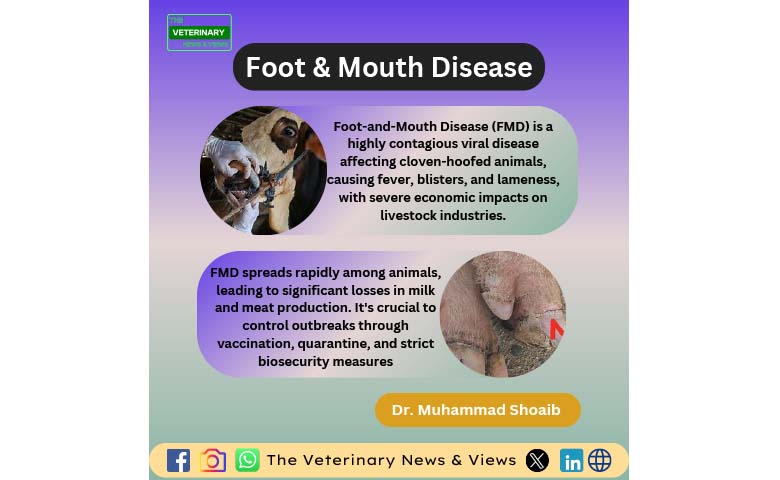Foot & Mouth Disease
Written by: Dr. Muhammad Shoaib, PhD Animal Nutrition
Contact: 0321-4134935, shoaib.imtiaz43@gmail.com

Introduction
Foot-and-Mouth Disease (FMD) is an infectious viral disease affecting cloven-footed animals. It is characterized by high fever and vesicle formation in the oral cavity, on feet, and on teats. This disease is known globally due to its severe economic impact. In terms of economic losses, it is one of the most important diseases of livestock, causing a drastic fall in meat and milk production. Although death in adult animals is rare, young animals are more susceptible, and affected females may become infertile for long periods. Exotic and crossbred animals that recover from FMD often start panting and become useless for farmers in terms of transport or work, and their production decreases after recovery.
Virus Types in Pakistan
Type A, Type C, Type Asia 1, and Type O of the virus have been identified in Pakistan. The antigenic differences among various types and subtypes pose a significant challenge in controlling the disease. Regular typing and subtyping of the virus should be conducted, and field strains should be added to vaccines. Mostly cattle and exotic breeds are susceptible. Mouth lesions are more severe in cattle, whereas foot lesions are more severe in buffaloes.
Challenges in Controlling FMD in Pakistan
- Natural and socio-economic problems make FMD control difficult.
- The occurrence of different serotypes, subtypes, and frequent mutations complicates FMD control.
- New antigenic subtypes constantly emerge, making vaccinated animals susceptible to new strains.
- Quality of vaccines is an issue; the trivalent vaccine (A, O, Asia 1) often doesn’t cover new strains.
- Lack of a comprehensive vaccination program.
- The FMD virus is resistant to commonly used disinfectants.
- Lack of quarantine measures when animals enter or exit farms.
- Nomadic animals carry infections from one area to another.